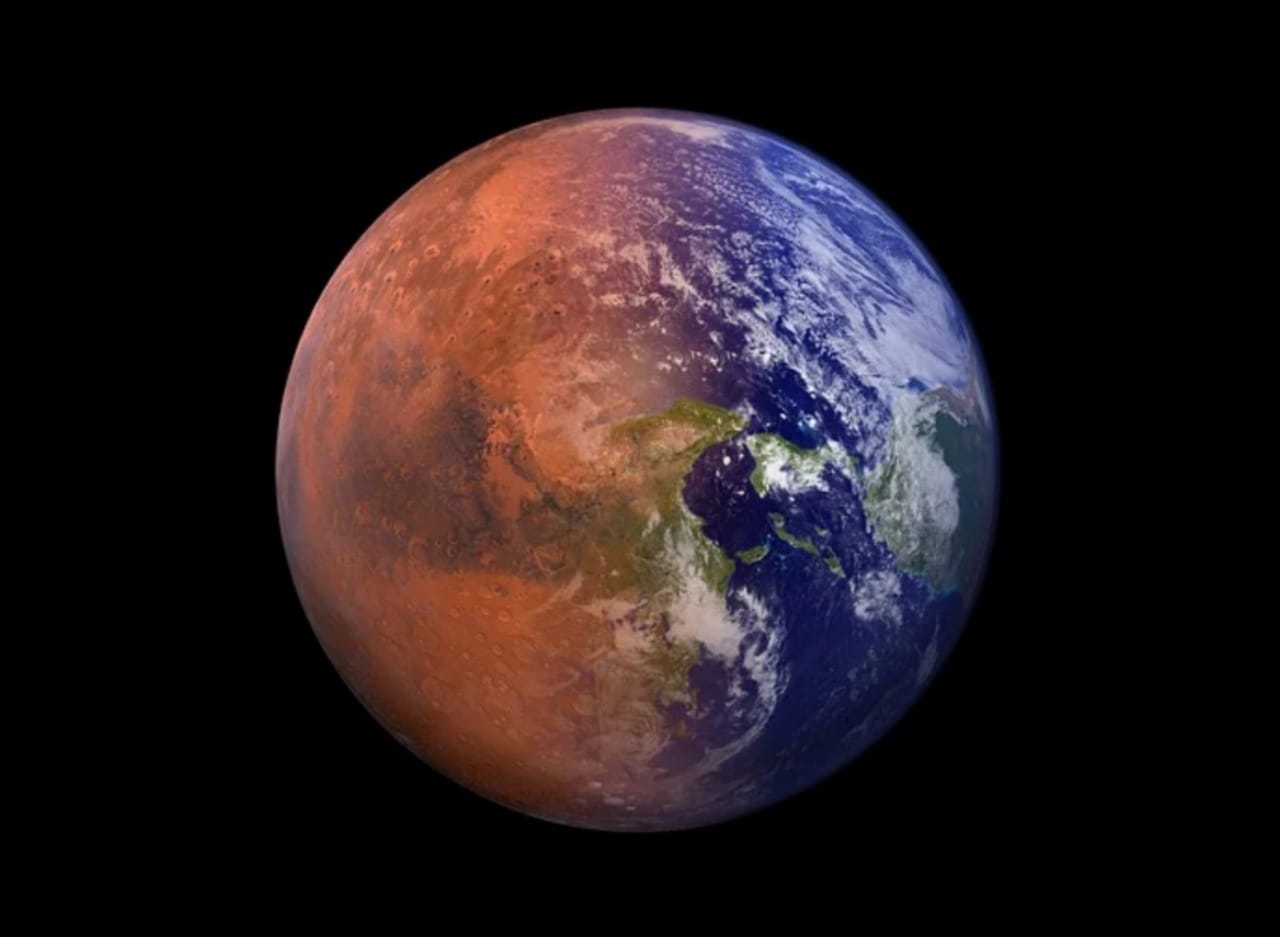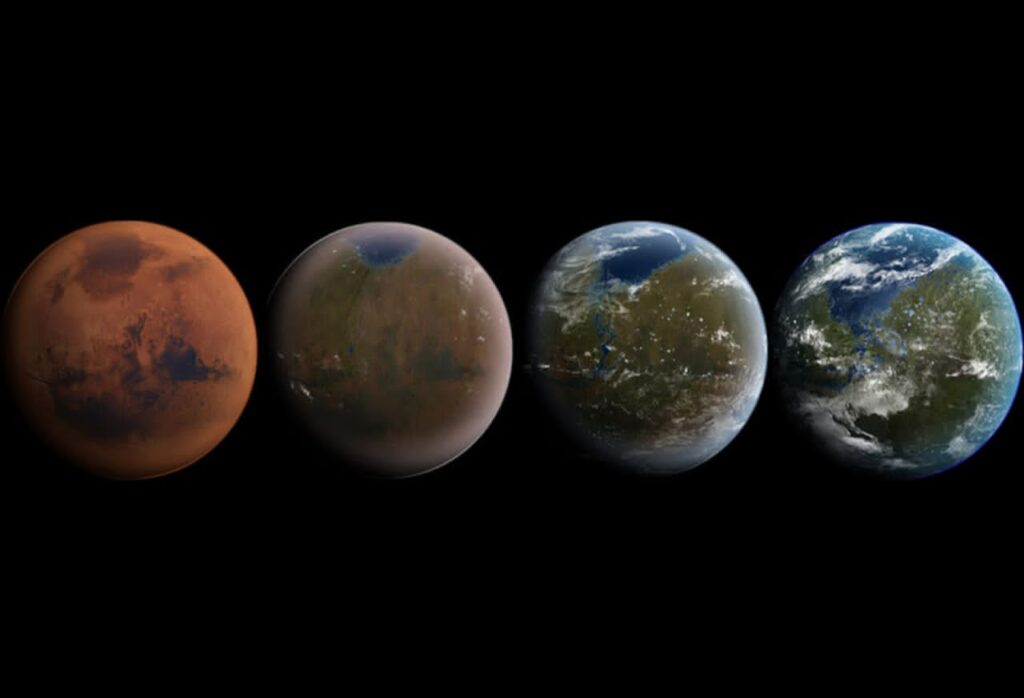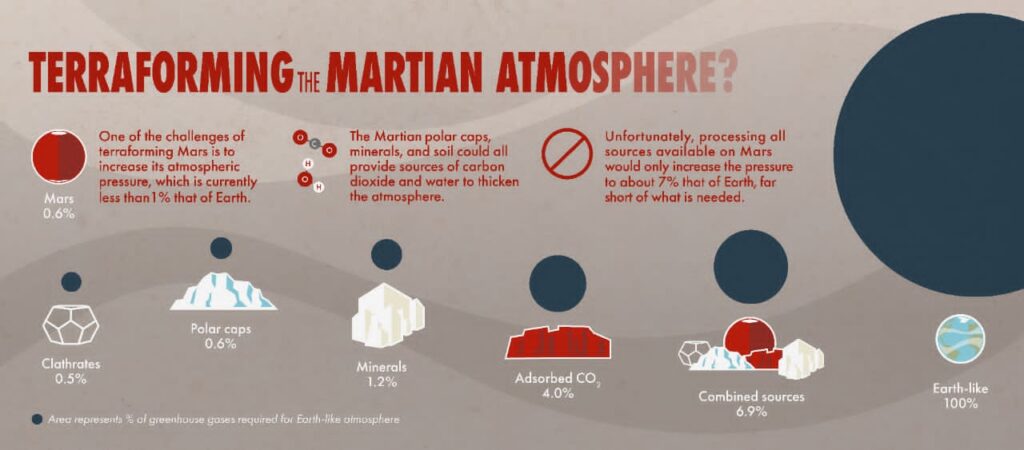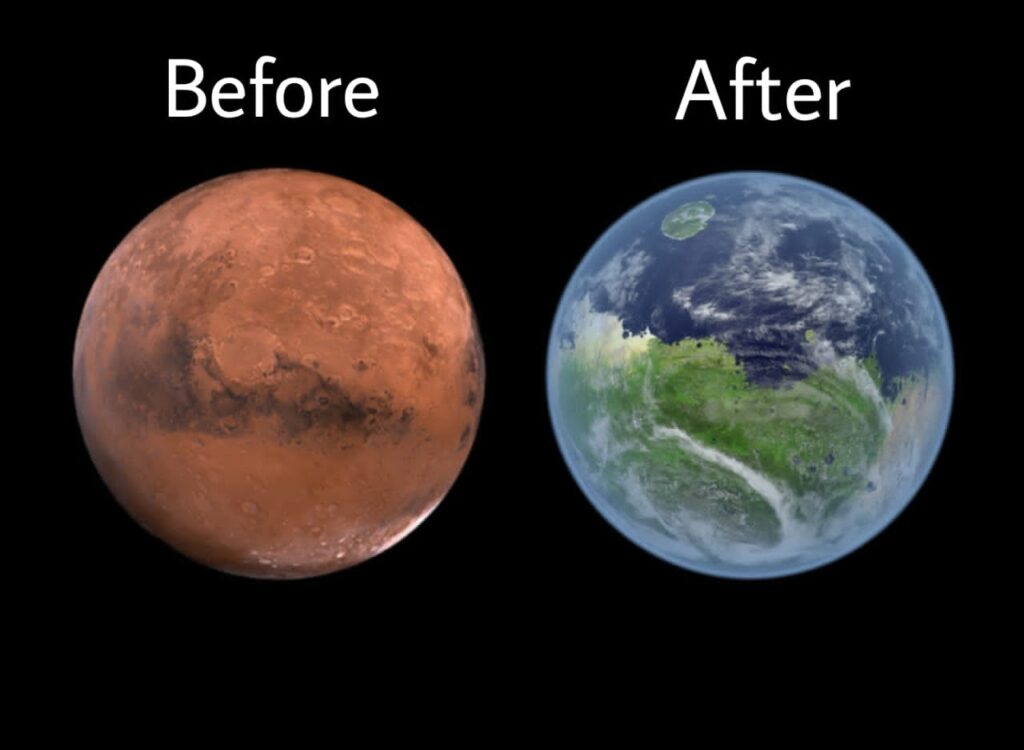Apart from Earth, Mars has been the biggest go-to planet for mankind. Since we have known a planet called Mars, we have been looking for methods how we can make the planet worth living. It has been a great piece of fantasy for us and has been mentioned in numerous stories and books. Every different thing depicts the planet differently.
Although the planet poses certain levels of difficulties, scientists and researchers have been looking at it with keen interest. So many questions arise at this stage. Can we terraform Mars? Is terraformation of Mars possible? What do we need to do for terraforming Mars? What happen if we successfully terraform Mars? What are the challenges in the path of terraformation of Mars? Curb your curiosity and this article will try to answer all your questions!
What you will know in this article:
What is the terraformation of Mars?
Terraformation is a process of using artificial technologies consisting of planetary engineering techniques to transform a hostile, lifeless planet into a planet where life could sustain itself. This is done with planets that can potentially host humans and other forms of life. This process involves several stages such as rehabilitation of planet’s climate, rejuvenation of atmosphere and surface through various initiatives and installation of an ecological system.
The terraformation of Mars is a big goal for mankind. All the research and development regarding Mars has been done with a motive to understand whether the planet can sustain life or not. With hundreds of missions in the past, we have got some crucial information regarding the planet which could help us understand more about it and ultimately get the answer to whether the planet can be terraformed or not.
Related: What will the first human settlement on Mars be like?
Why has Mars been chosen for terraformation?
With evidence-based research, various justifications for choosing Mars as the terraforming planet have come up. Some of the most prominent reasons for choosing Mars over other planets include the existence of water and a potential history which suggests that the planet once had a thick atmosphere just like the Earth.
In many aspects, Mars and Earth are considered to be quite similar to all the planets in the Solar System. Mars had abundant water in the past which was eventually lost over millions of years due to atmospheric escape. Over time, its atmosphere also became thinner and thinner. But for all these similarities, it is the closest Earth-like planet we can get for terraformation in our Solar system.
Why is terraformation of Mars required?
The Terraformation of Mars has been a big mission of mankind. This is because our own Earth has been suffering now. With the much bigger rise in population, more demand for resources and a solution to Doomsday, we need to find or originate different ways of supporting life. This involves colonising bodies apart from Earth such as Moon, Mars and other such celestial objects.
Other opinions suggest that the sustenance of Mars’ atmosphere can be done by terraformation. Since the planet’s atmosphere has become thinner with time, it has to be protected from being lost in space. For this, scientists suggest that a magnetic field for the planet can be the possible solution.
Also read: How will NASA return samples from Mars?
What problems are there to encounter for terraforming Mars?
Certain problems need to be encountered for the successful terraformation of Mars. These are:
- Low surface gravity only 38% of Earth
- Low light levels
- A toxic and thin atmosphere
- Cold temperatures
- No Magnetic field
- 1% of Earth’s atmospheric pressure
- Toxic soil
What steps need to be taken for terraforming Mars?
For terraforming a dry-dull planet into a lush habitable planet, where life can exist, several methods have been proposed which may or may not help us. Some of them are:
- Large orbital mirrors for heating the planet. They will reflect light from the Sun to Mars
- Greenhouse effect for trapping heat in the atmosphere
- Smashing ammonia heavy asteroids for increasing greenhouse effect.
The real question is can we reverse the effects of nature and turn Mars into a habitable planet? What needs to be done for that? Let us have a look at that:
1. A warmer Mars
Firstly, we need a warmer Mars. The atmosphere of the planet is thin and cold and couldn’t support liquid water. The Phoenix lander of NASA depicted that with atmospheric pressure just 0.6% of Earth’s, any liquid water present on the surface would evaporate.
Different views have originated for heating up the planet. Elon Must says that we could blast nuclear bombs on the polar caps of Mars. The heat produced could vaporise the atmospheric carbon dioxide and lead to a warmer planet due to the greenhouse effect. It could melt the ice at the polar caps and create liquid water.
But researchers say that the resulting water would be only a few metres of depth across the planet. The carbon dioxide in the atmosphere would only double the pressure, which will be still far away from Earth’s mark for liquid water and water vapour. Even if we use up all the carbon dioxide in the martian surface, the resulting pressure would only 10-15% of Earth, which would still be far away from the required standards.
Related: Does Mars have oxygen to breathe?
2. Oxygen on Mars
For life to exist, oxygen is a necessity. Currently, there isn’t enough oxygen in the atmosphere of Mars but with the MOXIE experiment, NASA aims to convert the existing carbon dioxide into oxygen. If this kind of technology works, it would be helpful in a huge way. But doing this task for a whole planet is not an easy task.
Since Mars receives much less light than Earth, for photosynthesis on Mars, researchers have to introduce organisms that synthesis in low light conditions for creating oxygen. But the biggest problem with this technique is time. For making the Martian surface and the atmosphere habitable, the artificially induced microorganisms will take at least a few thousand years.
3. A better magnetic field
Even if somehow we manage to get the things such as oxygen, enough carbon dioxide, a habitable atmosphere and liquid water, these conditions probably won’t last long.Everything on Earth including liquid water, the atmosphere and other things stay as they are due to the Magnetic field of the planet. Mars doesn’t have a proper magnetic field like Earth. The MAVEN mission by NASA revealed that the planet is losing its atmosphere and is becoming thinner due to a lack of preventive magnetic field.
If there isn’t a protective magnetic field, the induced conditions would quickly wipe off the planet due to solar winds. For truly, terraforming Mars, we need to fix the magnetic lack of Mars. With the current technology, there isn’t a way to churn the core of a planet to revive the magnetic field. But new theory based discoveries are on the way.
Is it possible to terraform Mars with the current technology?
According to a newly published paper, the sad news is that with the existing technologies, terraforming Mars is simply not possible. The authors say that the current technology isn’t capable enough to accomplish the entire process.
For raising temperatures on Mars, carbon dioxide is required in abundance for the greenhouse effect. Although Mars’ atmosphere is mostly carbon dioxide, there is only enough carbon dioxide to triple the atmospheric pressure which the authors of the paper found out. Tripling the pressure seems a lot but it is still one-fiftieth of the required gas necessary for the atmosphere required by earth’s creatures. There are methods for synthesising CO2 for terraformation, but most of them aren’t capable enough to fulfil the requirement.
The authors say that although it is the easiest planet to get to and terraform it and create a planet worth living they also claim that with the current technology, humans don’t have enough viable options.
What if we could possibly terraform Mars?
Suppose in a parallel world, we successfully terraform Mars, it would still be quite a harsh planet for us. Since Mars has only 38% of Earth’s gravity, its atmosphere would only be 0.38 bar. This essentially means that even a terraformed Mars would be very cold according to our standards. The air would be as thin and cold as siberia in winters
How long could it take to completely terraform Mars?
We just reached Mars in the previous century. For terraforming it, it could take several millennia for the notion of terraforming to be completely implemented. Even the Earth took billions of years to transform into a habitable planet. Making Mars an Earth-like planet is not a simple project and may take many centuries to get a habitable planet out of Mars.
Conclusion
Mars has been a mystery cum fantasy for humans since it was discovered. We have been on an age-long quest to determine whether life existed on Mars or whether it could support life. For creating Mars an Earth-like structure, it needs to undergo a process called terraformation. It includes the use of technologies to create an environment on a possibly habitable planet.
With our current set of tools and technology, there aren’t many viable options to terraform Mars. There are numerous difficulties in our path. For the complete implementation of this thought, we need much more advanced technology and loads of time. The process might take centuries to be completed to make Mars a habitable one.
Thank you for going through this article “What happen if we successfully terraform Mars?” We appreciate you for taking your time out and reading this article. If you are keen to know about the Earth’s geological pulse which was recently discovered, you can have a look at our article “What is Earth’s Geological Pulse?” If you have any recommendations for us or want us to write on any topic, do let us know in the comments section. Do leave your important feedback in the comments sections as well.
Resent posts:
Frequently asked questions
Q- Is it possible to terraform Mars anytime soon?
Answer: the short answer to this question is No. With current technology, it isn’t quite possible.
Q- Can we grow plants on Mars?
Answer: the soil of the Martian surface is toxic and contains nutrients unfit for the growth of plants.
Q- What amount of money would be required to terraform Mars?
Answer: Estimates say that nearly 2-3 trillion dollars would be required to terraform the planet.
Q- What amount of oxygen is present in Mars atmosphere?
Answer: Mars’ atmosphere contains only 0.13% oxygen as compared to 21% in Earth’s atmosphere.
Q- Which other planet can be terraformed?
Answer: Along with Mars, Venus and Moon are the most likely candidates to be terraformed.
Q- Why is Venus so much hot than any other planet?
Answer: Venus is surrounded by a thick atmosphere nearly 100 times massive than Earth’s. Thus, the sun’s radiations get trapped inside the atmosphere, leading to a much warmer planet.



